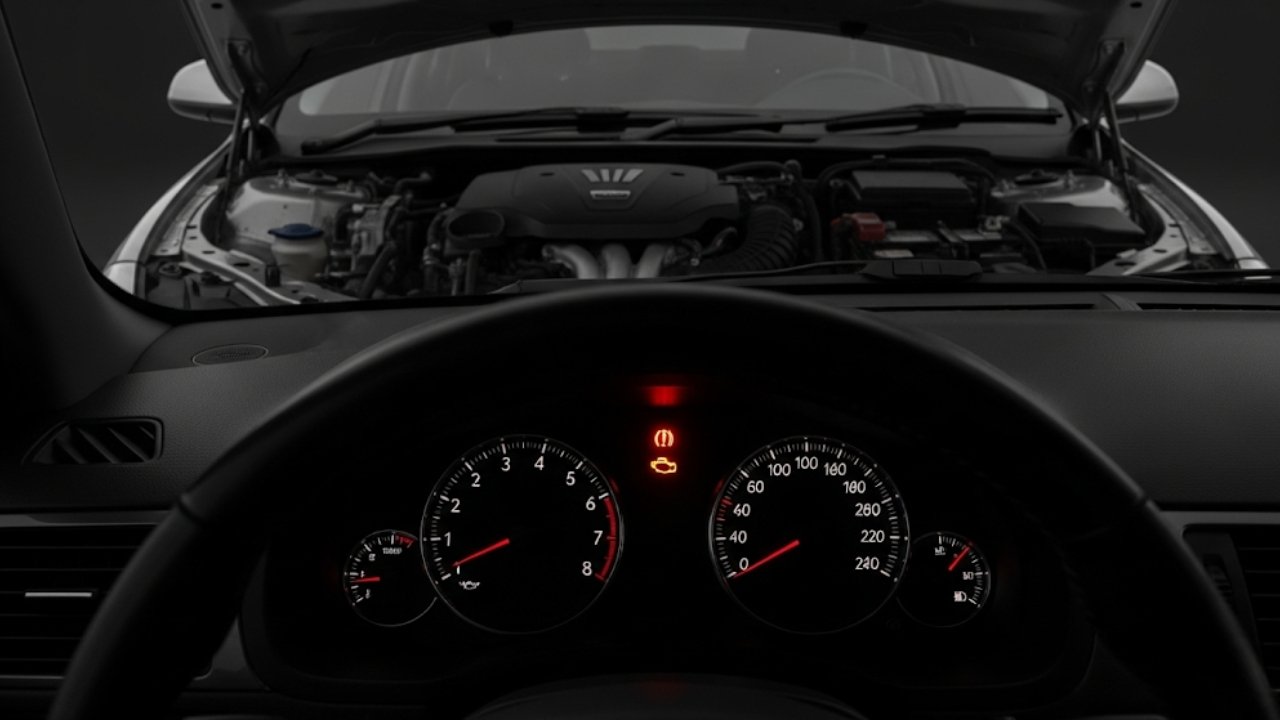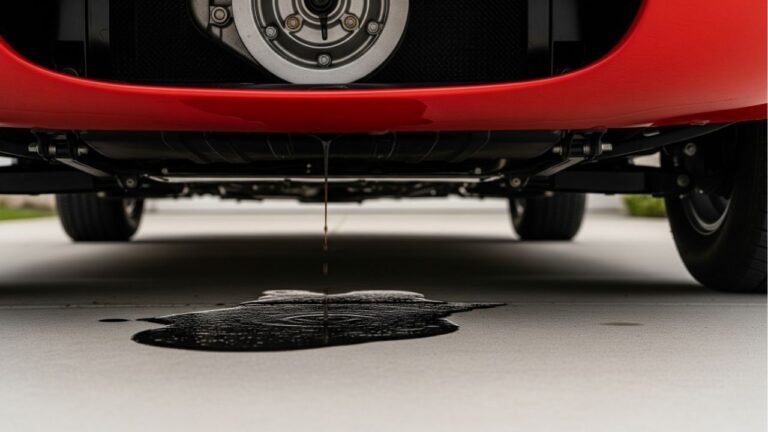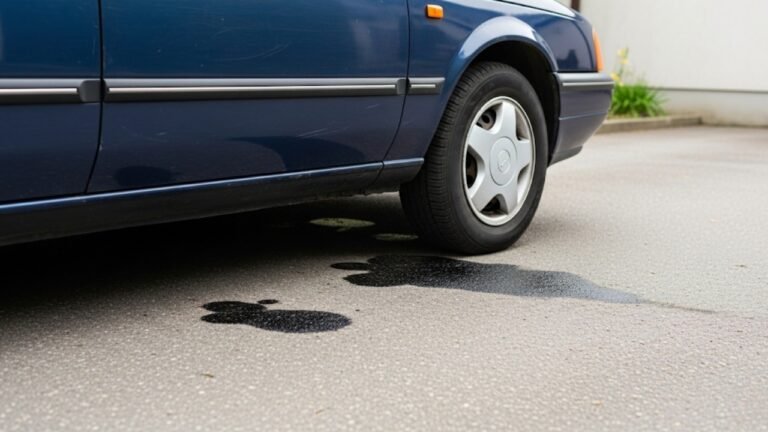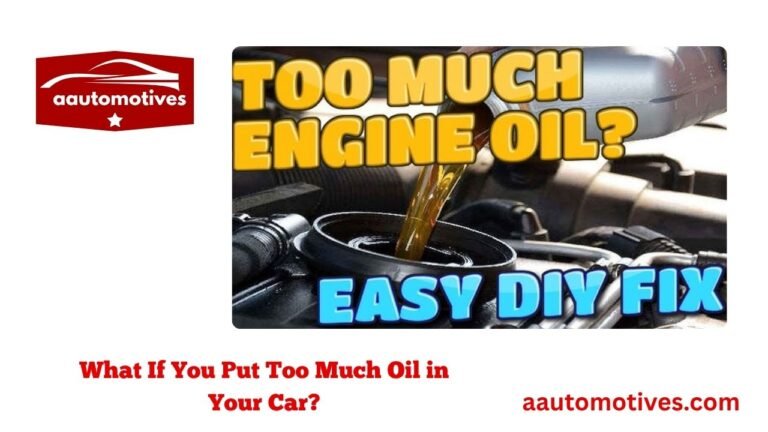No Oil Pressure in Car? Here’s Why It Happens

Imagine this—you’re cruising down the road, music playing, windows down, and suddenly a red oil warning light flashes on your dashboard. Your heart skips a beat. What could be wrong? You stop the car, check under the hood, and nothing seems out of place. But the light stays on. This might be a sign of no oil pressure in the car—a situation as serious as it sounds.
Your car’s oil pressure system is like its circulatory system. Just as your body needs blood to function, your engine needs oil. When there’s no oil pressure, it’s like your engine is running dry—metal grinding on metal. Without quick action, this can mean severe, sometimes permanent, engine damage.
In this article, we’ll break down everything about no oil pressure in car issues. We’ll look at causes, warning signs, real-life stories, fixes, and how to avoid it in the first place. All in a tone like your car-enthusiast friend sharing hard-earned lessons over a cup of tea.
What Does “No Oil Pressure in Car” Really Mean?

But this isn’t just technical. I once had a friend named Rafi who ignored the oil pressure warning light thinking it was a sensor glitch. His Toyota Allion engine seized up just 20 minutes later, and it cost him over 1.5 lakh taka to fix. No joke.
Let’s break down what oil pressure really does:
Lubricates moving parts inside the engine
Cools engine components
Protects against wear and corrosion
Carries debris away via the oil filter
Without oil pressure, the engine runs dry and gets hotter than Dhaka in May.
Common Warning Signs of No Oil Pressure
Before your car screams for help, it whispers. Listen closely to these signs:
Dashboard Oil Warning Light
This is the first sign. Don’t ignore it. Even if the engine sounds fine, this light means there’s a problem with the oil pressure system.
Strange Noises
If your engine starts making ticking, knocking, or grinding sounds, that’s the sound of metal-on-metal contact—a result of no lubrication due to no oil pressure.
Engine Overheating
Oil helps with cooling. Without proper pressure, your engine may overheat fast, especially in traffic.
Burning Smell or Smoke
Oil might not be circulating, but it could be burning off in hot spots. If you smell burning or see smoke, pull over immediately.
Engine Stalling or Poor Performance
Low or no oil pressure can cause the engine control unit (ECU) to shut the engine off to avoid damage. It’s a protective measure.
Table: Symptoms and What They Mean
| Symptom | Possible Meaning |
|---|---|
| Oil light on dashboard | Pressure too low or sensor issue |
| Ticking/knocking noises | Lack of lubrication |
| Burning smell or smoke | Oil burning or leak |
| Engine overheating | Inadequate oil flow |
| Engine stalling | ECU shuts down to prevent damage |
Causes Behind No Oil Pressure in Car
The causes vary—from simple to severe. Let’s break them down.
1. Low Oil Level
It might sound obvious, but sometimes it’s just that. Over time, your car may burn oil or develop leaks. If oil levels are too low, the pump can’t build pressure.
Tip: Check your dipstick weekly. If it’s bone dry, you’ve found your issue.
2. Faulty Oil Pump
This is the heart of the oil system. If the oil pump fails, pressure drops. No pump, no flow—simple as that.
A malfunctioning pump may:
Whine or make a humming noise
Cause low oil pressure despite normal levels
3. Clogged Oil Filter
Oil filters catch gunk. If they’re blocked, oil flow gets restricted. Modern cars have bypass valves, but older models may suffer total blockage, leading to no oil pressure.
4. Worn Engine Bearings
Engine bearings help components spin smoothly. Over time, these wear out. If the gap between them gets too large, oil flows through too easily, reducing pressure.
5. Oil Pressure Sensor Failure
Sometimes, the issue is not mechanical. It could be an electrical glitch in the oil pressure sensor or its wiring. It might falsely report no oil pressure, even when the system is fine.
6. Oil Viscosity Problems
Using the wrong type of oil—too thin or too thick—can affect how oil flows. In hot weather, too-thin oil loses pressure. In cold weather, too-thick oil struggles to circulate.
How to Fix No Oil Pressure in Car
So your warning light is on—what now? Here’s a step-by-step list of what to do:
Step 1: Stop Driving Immediately
Turn off the engine. Driving with no oil pressure is like running a marathon without water. You’ll destroy your engine.
Step 2: Check Oil Level
Pop the hood and check the dipstick. If it’s low, top up with the correct oil grade. If it’s totally empty, don’t restart the engine—tow it to a mechanic.
Step 3: Look for Oil Leaks
Check under the car. Is there a puddle? Check around the oil pan, filter, and drain plug. Leaks may be slow and subtle.
Step 4: Inspect Oil Filter
Did you recently get an oil change? A poorly fitted or low-quality filter might be clogged or leaking.
Step 5: Scan for Sensor Errors
Use a diagnostic scanner (or visit a mechanic) to see if the oil pressure sensor is faulty. Sometimes, replacing a $20 sensor solves the issue.
Step 6: Professional Inspection
If nothing looks wrong, a mechanic needs to test oil pressure manually with a gauge. If real pressure is low, they’ll check the pump, bearings, or even remove the oil pan for a closer look.
Real Story: What Happened to My Uncle’s Premio
Here’s a real experience from my uncle in Mymensingh. His 2012 Toyota Premio suddenly showed an oil warning light during a trip to Dhaka. He panicked, but didn’t stop the car immediately—just slowed down. By the time he reached a garage in Uttara, his engine was overheating, and the oil was leaking badly from the filter gasket. A ₹30 filter cost him an engine rebuild worth over 1 lakh taka.
Moral of the story? Never ignore no oil pressure in car signs—even for a minute.
Preventing No Oil Pressure: Simple Habits for Car Health
You don’t need to be a mechanic to avoid this nightmare. Just build good habits.
Check your oil level weekly
Change oil and filter regularly (every 5,000–10,000 km)
Use the right oil viscosity for your climate
Inspect leaks after every oil change
Address warning lights immediately
Clean the engine periodically to spot issues early
Driving Habits That May Lead to No Oil Pressure
Sometimes the problem isn’t under the hood—it’s behind the wheel. The way we drive affects the car’s internals more than we realize.
Aggressive Driving
If you’re constantly pushing the gas pedal like you’re in the Dhaka-Chittagong rally, your engine is under high stress. This increases oil temperature, which thins it out. Thin oil can’t build enough pressure.
Ignoring Warm-Up Time
Jumping into the car and speeding off without letting the engine warm up is another bad habit. Cold oil is thick, and it takes time to circulate. Let your engine idle for at least 30–60 seconds after starting.
Long Idle Periods
Idling too long, especially in the summer, can raise engine temperature. If oil levels are low or the oil is old, pressure may drop. Modern engines need movement to cool efficiently.
Delaying Oil Changes
Don’t wait till your oil turns to sludge. Old, dirty oil can clog passages and filters, reducing pressure. Set a reminder on your phone if you’re forgetful.
Understanding Key Oil System Components
Let’s get a bit nerdy—but not too much! These are the key components that keep oil pressure in check:
| Component | Function | Failure Effect |
|---|---|---|
| Oil Pump | Circulates oil through engine | Low or no oil pressure |
| Oil Filter | Traps contaminants | Can clog and reduce oil flow |
| Oil Pressure Sensor | Monitors and reports oil pressure to ECU | May send false readings |
| Oil Pickup Tube | Pulls oil from sump to the pump | Clogs or cracks cause loss of suction |
| Oil Passages | Channels oil to key engine parts | Blockages result in pressure drop |
Each part works like a team. One failure can affect the whole system—like a group project where one guy doesn’t show up.
How Mechanics Diagnose No Oil Pressure in Car
Ever wondered how professionals get to the bottom of this problem? Here’s a simplified version of what happens in a garage:
Step 1: Manual Oil Pressure Test
They use a mechanical gauge to measure the actual pressure at the port where the sensor goes. This helps confirm if the problem is real or just a faulty sensor.
Step 2: Oil and Filter Check
They’ll examine the oil—color, consistency, level—and inspect the filter. If oil is thick and black, or there’s sludge, it could be the cause.
Step 3: Oil Pump Inspection
If everything else looks okay, they may drop the oil pan to access and inspect the oil pump. It’s a labor-intensive task, so not done unless necessary.
Step 4: Engine Inspection
If still unresolved, a deeper inspection of engine bearings, crankshaft clearance, and oil passages may be done—usually in severe cases.
How to Maintain Healthy Oil Pressure Long-Term
Let’s future-proof your engine. Follow these steps to keep your car’s oil pressure steady and your engine happy.
Stick to Regular Maintenance
Change your oil and filter on schedule—every 5,000 to 10,000 km, depending on the car and oil type.
Use the Right Oil
Your car’s manual tells you the exact viscosity grade—follow it. Don’t just go by hearsay or what the local shop suggests.
Keep the Engine Clean
Sludge builds up when oil isn’t changed on time. It blocks passages and restricts flow. Use engine flush occasionally if needed.
Drive Smart
Avoid sudden acceleration and hard braking. Let the car warm up. And if you notice anything weird—act fast.
FAQs About No Oil Pressure in Car
1. Is it safe to drive with no oil pressure?
No. Driving with no oil pressure can destroy your engine in minutes. Pull over and shut the engine off immediately.
2. Can low oil cause no oil pressure?
Yes. If your oil level is too low, the pump can’t build pressure, leading to no oil pressure in the car.
3. Is it always an engine issue?
Not always. Sometimes it’s just a bad sensor or electrical issue. But don’t assume that—always check physically.
4. How much does it cost to fix no oil pressure?
Depends on the issue:
Sensor: ৳2,000–৳5,000
Oil pump: ৳15,000+
Engine repair: ৳50,000–৳1,50,000+
5. What kind of oil should I use?
Check your owner’s manual. In Bangladesh’s climate, 10W-30 or 5W-30 is common. But newer cars may require synthetic oil.
6. Can synthetic oil prevent pressure loss?
It helps. Synthetic oil resists breakdown better and flows more consistently, especially in extreme temperatures.
7. Can too much oil cause pressure problems?
Surprisingly, yes. Overfilled oil can cause foaming, which reduces actual pressure and can damage the engine.
8. How often should I check my oil?
Ideally once a week or every 500 km, especially if your car is older or you drive long distances.
Final Thoughts: Don’t Wait for the Red Light
Your car talks to you—through lights, sounds, and smells. When the oil light comes on or you suspect no oil pressure in car, don’t wait. Even a delay of 5 minutes can cost you thousands.
Think of oil pressure as your engine’s blood flow. Would you ignore low blood pressure in your body? Then don’t ignore it in your car.
Be smart. Be observant. Maintain regularly. And most importantly, treat your car like a friend—not just a machine. It’ll return the favor by running longer, stronger, and smoother.






